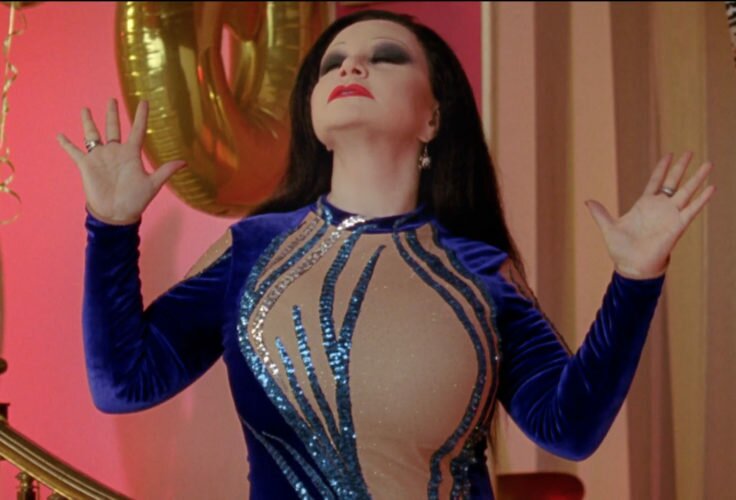Cthulhu is pop. H.P. Lovecraft’s monster representing cosmic horror now has its own GIF version, emoji, etc. Alexandre Serrano can’t believe his eyes.
by Alexandre Serrano
Shining in the Dark:
Russian Mob Tattoo

In The Gulag Archipelago, Alexandr Solzhenitsyn mentions a remarkable brief news story he read in a 1949 scientific magazine: during an excavation in the Siberian region of Kolymá, in a subterranean prehistoric ice vein, trapped within it, had been found triton fossils in such a fresh state of preservation that the men present didn’t hesitate to break the ice and… eat them. The old concentration camp prisoner understood immediately the scene behind that seemingly funny story. Those who had jumped on such dubious snack losing any sense of decorum couldn’t be but workers to whom the exercise carried out in the tundra had made suddenly very hungry. Only one type of men was aware of that animal urgency: the zek, that is, condemned to forced labour.
The anecdote is revealing, not because it introduces us with irony into a place in which atrocious, grotesque and almost inconceivable things happened, but because we are able to understand with a spark what was that “world apart” like, (as Herling-Grudzinski entitled his huge book on the gulag experience), a microcosm that worked following such particular norms that only those who’d been there could decipher and make any sense of them.
As Solzhenitsyn teaches us, the Russian Soviet penal system has generated encrypted communication codes the logic of which means nothing for most mortals. And possibly none of them is as picturesque and disconcerting as the one encoded by prison tattoos. Fuel’s last year publishing of Russian Tattoo Criminal Police Files is, however, an excellent initiation to embrace a language that for decades has served the purpose of identifying and establishing hierarchies among inmates. The book includes a selection of photographs and materials compiled by Arkady Bronnikov, a civil servant in the USSR’s Ministry of Interior, meant to illuminate that dark area.
Already from the times of the tsars, the tattoos that prisoners stamped on their skin, eyelids included, were far from a mere decoration. On the contrary, they were a source of graphic information talking about the status, record and inclinations of those sporting them. The widely varied designs and the way in which they were intertwined have a meaning that is both symbolic and straightforward, and a tone that ranges from mockery to the poetic and challenging. Thus, church domes represent the number of sentences, the Virgin Mary with child an initiation into the criminal world at a very early age, the bat stands for a night robber, the scribe monk is the symbol of those skilled with sharp weapons and a mermaid indicates having been locked for surrendering to their singing (that is, for rape).
There are also many plays on words and double meanings: Lenin’s tattoo corresponds to the Russian initials of “October revolution leader”: vor (thief), while the name or image of god, Bog, don’t have to do with devotion, but are a synonym for “will steal again” with which they expressed a contempt towards any promise of reintegration. Not everything is that simple, though, because there’s also a risk of polysemy and recoding. An example? The cat is both a symbol of cunning, of a wallet thief and of “prison natives”, that is, those who have spent more time inside than outside of what they call the “zone”. But if the cat has a ribbon that might mean that the person has been in trouble with the authorities. Because that’s another story: some tattoos are made by force and are meant as a stigma.



The inclination towards engraving on your body for life such ostentatious and tell tale marks about your prison years, using the most painful and unhealthy methods one could think of, might well be beyond our understanding. However, it helps knowing that the tattoos compiled in Bronnikov’s book, as those included before on the no less fabulous Russian Criminal Tattoo Encyclopaedia of also penal civil servant Danzig Baldaev and published too by Fuel, sealed an adhesion. They distinguished in particular the vory vs the zakone. These “thieves within the law” were criminals whom, after long years in Siberian penitentiaries, developed a form of organised criminality that became a parallel society ruled by their own and excluding norms. Tattoos were, thus, a symbol of belonging to that special caste, a means of hidden recognition and of expression of inverted ethics, one praising rebelliousness before authority, a compromise almost priestly with the criminal underworld and a stoic attitude before the suffering required by all those who have sworn never to abandon the path of the outlaw.
In all, the validity of the code in contemporary Russia and the ex-Soviet republics seems compromised. The fall of socialism and the emergence of new mob nets transformed their nature and the relationships between its members. And if it’s true that the habit of getting tattoos didn’t disappear, as Alix Lambert explains in another reference title on the subject, , those changes brought about a weakening and loss of rigueur in their use. Not only due to the proliferation of new designs with a merely aesthetic value and devoid of any “readable” meaning, but also because of the greatest corruption caused by tattoos bought with money by people who would never have earned the merit of sporting them and who thus forged their criminal identity. A transgression that in the old days was rare, easy to spot and could had as a consequence infamy and severe punishment, but today had become common and unpunished. The act of being able to put forward your own skin with no hesitation –a ritual shown in David Cronenberg’s film and which plays an important part in the development of its plot– would have lost the dramatic meaning it had back then.
Bronnikov’s book documents a culture that has already entered its dissolution phase. But for that reason, its value is even greater. In a planet that seems to advance towards indifference –and in which tattoos have become a global cliché with meaningless motifs that are reproduced from one end to the other–, the primitive two-headed eagles and orthodox cathedrals, daggers and eight-point stars portrayed on the photographs bring back the images of a world with a precise contour and exact demarcations right before they all became a blur. They are a reaffirmation of singularity and a resistance towards levelling. And despite the brutality and aberrant squalor of the medium that created them, we see shining in them all the splendour and beauty of the Form.
























